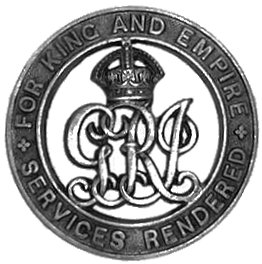THE VILLAGERS OF COLLINGHAM AND LINTON WHO SERVED IN WORLD WAR ONE
COLLINGHAMANDDISTRICTWARARCHIVE.INFO
 CONTACT
CONTACT



Rank Private
Service Number 21837
Service Army
Battalion 10th Battalion
Regiment Northumberland Fusiliers
Trade or Occupation pre-war: Farm labourer
Marital status: Single
* Taken from attestation papers or 1911 census
** Marital status on enlistment or at start of war
- Born in Collingham, Linton or Micklethwaite
- Lived in Collingham, Linton or Micklethwaite immediately prewar or during the war
- Named as an Absent Voter due to Naval or Military Service on the 1918 or 1919 Absent Voter list for Collingham, Linton or Micklethwaite
Biography
Family background
George Richard Phillips was born on the 5th August 1883 in Collingham. His mother was Harriet Booker of Collingham. George appears on the 1891 census of Collingham living with Harriet Phillips, a widow, his brother John, a sister, Martha H Harradine, her husband Herbert Harradine and their young son, Charles H Harradine. Interestingly John and George Richard are listed with the surname Booker, and John's birth was registered under the name John Phillips Booker.
Ten years earlier, in 1881, George's mother Harriet was living in Albert Place, Collingham with Martha and a lodger Richard Phillips. Harriet was at that time unmarried which perhaps explains John and George's name being listed as Booker in the 1891 census. Harriet and Richard married in Wetherby district in 1882. Richard Phillips died in 1901, but Harriet and family (now with the surname Phillips) continued to live in Collingham throughout their lives. In 1911 they were living at 4 Rider Place, Collingham. George was 27, single, and was a farm labourer for a potato merchant.
George Richard Phillips died in 1942 and his obituary in the Collingham Parish magazine for August 1942 gives some information on his service in the Great War.
Our sympathy goes out to Mrs. Phillips and her four daughters and three sons in their loss. George Richard (known to everyone as Dick) Phillips, was born here 58 years ago, and, apart from his service during the Great War, his life was spent in the village. During his service he was abroad for a long spell, during which time he lost a leg. On his return, with the aid of an artificial leg, he was able to carry out duties as postman, from which he retired due to ill-health, just two years ago. He was a member of the British Legion, and fellow-members were bearers at the interment, the Union Jack being draped on the coffin, and the Legion Banner carried and lowered over the grave, the service being conducted by the Vicar the Rev. J.B. Unthank, M.A.
Service record
The newly digitised and released Pension Record Cards have allowed us to identify his service in more detail. George Richard Phillips served as Private 21837 George Richard Phillips in the 10th Battalion of the Northumberland Fusiliers, having enlisted on the 23rd March 1916. George's service record has not survived so we do not know from that when he was injured, but his pension card confirms that he suffered a gun shot wound to the left leg which was amputated.
The 10th Northumberland Fusiliers had formed at Newcastle in September 1914 as part of Kitchener's New Army 3 and came under orders of 68th Brigade, 23rd Division. They had landed in France in August 1915, and George must have been posted to join them sometime after his enlistment. In November 1917 the battalion moved with the 23rd Division to the Italy front. On the 16th November 1917 they concentrated between Mantua and Marcaria and on the 19th November moved forward, taking over the front line on the 4th December on the Montello, behind the River Piave. They held the front line until the 18th February 1918, and then took over the same sector again from the 26th February to the 14th March. The whole Division then moved westward and on the 23rd March 1918, they took over the right sector of the line on the Asiago Plateau. They held this front until the 23rd April, and, after resting, took over the same sector on the 19th May. They then took part in the Battle of the Piave from 15th - 16th June, before handing over its sector to the 48th Division on the 23rd July 1918. Close to the end of this period, we now know that George was wounded.
The digitisation of the representative First World War medical records has helped in throwing more light onto what happened to George. The records of No. 39 Casualty Clearing Station (CCS) for 22nd June to 18th July 1918 show that George was admitted from 70th Field Ambulance and No 39 Ambulance Train to the CCS on the 16th July 1918, suffering from shell wounds to the arms and left leg. George was treated there for 14 days before being further transferred to the sick convoy.
After his injury, George was discharged from the Army on the 17th October 1919 under King's Regulations paragraph 392 (xvi) - No longer physically fit for war service. As well as the Victory Medal and British War Medal for his services, George was awarded a Silver War Badge.
After the war
George returned to the area. In 1939 he was living at 41, Brookside, Collingham. George died in 1942 and is buried locally.
Biography last updated 20 January 2020 23:47:59.
Sources
1911 Census. The National Archives. Class RG14 Piece 25962
First World War Medal Index Cards. The National Archives (WO372).
First World War Medal Index Rolls. The National Archives (WO329).
Pension Record Cards and Ledgers. Case number 4/M P/5577
If you have any photographs or further details about this person we would be pleased to hear from you. Please contact us via: alan.berry@collinghamanddistrictwararchive.info